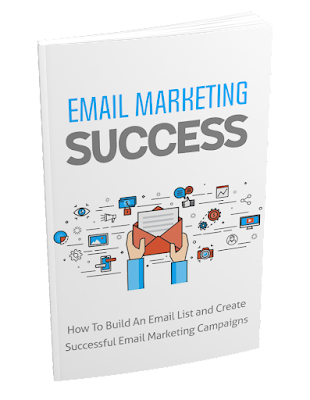§ Introduction:
Are you looking to boost your
affiliate marketing efforts and reach a wider audience? Do you want to learn
how to create engaging content that resonates with your target audience? Or
perhaps you're curious about the power of humor in marketing and how to use it
effectively?
In this article, we'll explore
several key topics related to affiliate marketing, from gaining more affiliate
links to crafting an effective marketing strategy. We'll also delve into the
importance of targeting the right audience and creating engaging content that
keeps your audience coming back for more.
Whether you're a seasoned affiliate
marketer or just starting out, this article will provide you with valuable
insights and practical tips to help you succeed in the world of affiliate
marketing. So, let's dive in and explore the key strategies and tools you need
to take your affiliate marketing game to the next level.
§ Every day I
track my affiliate links I find no clicks, what should I do to solve the
problem?
If you're tracking your affiliate
links every day and not getting any clicks, it's time to evaluate your approach
and make some changes. Here are a few things you can try:
1.
Re-evaluate your target audience: Are you targeting
the right people? If you're not getting clicks, it's possible that your
audience isn't interested in the product you're promoting. Consider whether you
need to adjust your targeting to attract a more relevant audience.
2.
Review your marketing strategy: Look at the marketing
channels you're using to promote your affiliate links. Are you using the right
channels to reach your target audience? Do you need to adjust your messaging or
the way you're presenting the product?
3.
Improve your content: The content surrounding your
affiliate links can have a big impact on click-through rates. Make sure your
content is high-quality and engaging, and that it clearly explains the value of
the product you're promoting.
4.
Experiment with different products: If you're
consistently not getting clicks on a particular product, it may be time to
switch things up and try promoting something else. Experiment with different
products and see if you have better luck with a different offer.
5.
Consider working with a mentor or coach: If you're
really struggling to get clicks on your affiliate links, consider working with
someone who can help you troubleshoot and optimize your approach. A mentor or
coach with experience in affiliate marketing could provide valuable insights
and advice.
§
How to target the suitable audience?
To target the suitable audience for
your affiliate links, you'll need to understand who your ideal customer is and
where they spend their time online. Here are some steps you can follow:
1.
Define your target audience: Start by creating a
detailed profile of your ideal customer. Consider factors like age, gender,
location, interests, and purchasing habits.
2.
Research your audience: Use tools like Google
Analytics, social media analytics, and market research to learn more about your
target audience. Look at demographic data, online behavior, and purchasing
patterns to identify where your audience spends their time online and what kind
of content they engage with.
3.
Choose the right channels: Based on your research,
identify the channels that your target audience is most active on. This could
include social media platforms, forums, blogs, or email newsletters.
4.
Create targeted content: Once you know where your
audience is spending their time online, create content that speaks directly to
them. Use language and messaging that resonates with their interests and needs,
and make sure your content provides value.
5.
Optimize your approach: Continuously track your
results and adjust your approach as needed. Experiment with different channels,
messaging, and content to see what works best for your audience.
By taking the time to understand your
target audience and tailor your approach to their needs and interests, you can
increase the likelihood of getting clicks on your affiliate links and driving
conversions.
§
What is marketing strategy?
Marketing strategy refers to the
overall plan of action that a business or organization takes to promote its
products or services to its target audience. A marketing strategy typically
involves a combination of tactics and channels aimed at achieving specific
business objectives, such as increasing brand awareness, generating leads, or
driving sales.
A marketing strategy typically
includes several key elements, including:
1.
Target audience: Identifying the ideal customer for
your product or service.
2.
Value proposition: Articulating the unique benefits of
your product or service and how it addresses your customer's pain points.
3.
Messaging: Developing consistent, compelling messaging
that resonates with your target audience.
4.
Channels: Selecting the channels through which you
will promote your product or service, such as social media, email marketing, or
paid advertising.
5.
Tactics: Developing specific tactics for each channel,
such as creating content, running ads, or hosting events.
6.
Measurement: Defining key performance indicators
(KPIs) and tracking progress against them to ensure the marketing strategy is
delivering results.
Overall, a marketing strategy is
critical for businesses to effectively reach and engage with their target
audience and achieve their business objectives.
§
How to have engaging content?
To create engaging content, you need
to understand your target audience and deliver content that resonates with
them. Here are some tips to help you create engaging content:
1.
Know your audience: Conduct research to understand the
interests, pain points, and needs of your target audience. This will help you
create content that is relevant and valuable to them.
2.
Use visuals: Incorporate visuals like images, videos,
and infographics to make your content more engaging and memorable.
3.
Tell a story: People love stories, so use storytelling
techniques to create content that is more compelling and relatable.
4.
Use humor: Humor can be a powerful tool for engaging
your audience, so consider incorporating funny or witty elements into your content.
5.
Keep it concise: People have short attention spans, so
make sure your content is easy to digest and doesn't drag on too long.
6.
Provide value: Create content that solves a problem,
answers a question, or provides helpful information. This will make your
content more valuable and engaging to your audience.
7.
Encourage interaction: Include calls-to-action that
encourage your audience to engage with your content, such as asking for
comments or feedback.
8.
Be authentic: People respond well to authentic content
that feels genuine and sincere. Be yourself and let your personality shine
through in your content.
By incorporating these tips into your
content creation process, you can create content that is more engaging,
memorable, and effective at connecting with your audience.
§
What is humor tool and how to use it?
Humor is a tool that can be used in
marketing and content creation to engage and connect with your audience. When
used correctly, humor can be a powerful way to make your content more
memorable, relatable, and shareable.
Here are some tips for using humor in
your marketing and content:
1.
Know your audience: Humor is subjective, so make sure
you understand your audience's sense of humor before trying to be funny.
2.
Use humor appropriately: Be mindful of the context in
which you're using humor. Avoid humor that is offensive, inappropriate, or
insensitive.
3.
Be clever: Use wordplay, puns, or other clever
techniques to make your audience laugh and think.
4.
Be relatable: Use humor that your audience can relate
to. Tap into common experiences, problems, or situations that your audience
might encounter.
5.
Be original: Avoid using tired or overused jokes.
Instead, try to come up with fresh, original humor that will surprise and
delight your audience.
6.
Be consistent: If you're going to use humor in your
marketing or content, make sure it fits with your brand personality and overall
messaging.
7.
Test and measure: Humor can be tricky, so test your
content with a small audience before going public. Track engagement and
feedback to see if your humor is resonating with your audience.
Remember, humor is just one tool in
your marketing toolkit. It can be effective when used appropriately and in
moderation, but it's not appropriate for every situation or audience. Use humor
thoughtfully and strategically to create content that is memorable, engaging,
and effective.










.png)


No comments:
Post a Comment